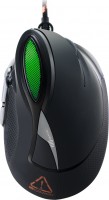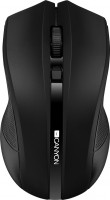Mice Canyon series CNS
prices on 5 modelsCanyon CNS
To connect to a PC or laptop, Canyon CNS mice have a USB radio receiver with a ten-meter range, and a pair of AA batteries plays the role of the source. Less common are CNS mice with a built-in battery. The optical sensor operates in the range from 800 to 1600 DPI, which is enough to cover the needs of 99% of users. The button layout includes a pair of main keys and a scroll wheel; additional buttons on the side are optional.
 |
In some cases, the manufacturer goes a little beyond the usual boundaries, resulting in quite interesting and affordable alternatives to premium mice from Microsoft and Logitech. An excellent example of this is the Canyon CNS-CMSW18 model with wireless multi-connectivity, a quiet scroll wheel and Qi wireless charging. The low hump and neat design hint that this option was created with fans of Apple technology in mind. To others
Also in the CNS series there are not quite ordinary vertical mice with the body turned on its side. The main purpose of vertical mice is to reduce pressure on the wrist joints and prevent the development of unpleasant things like the famous carpal tunnel syndrome. Thanks to the vertical shape, the wrist, forearm and hand are in a natural position while working, which is why the hands are less tired. It is important to note that the cost of such models does not go beyond the pricing policy of the Canyon CNS series. For example, a rather convenient wireless model Canyon CNS-CMSW16 with a PixArt 3212 sensor will cost a potential buyer a maximum of $20. For comparison, analogues from more well-known brands cost 3–5 times more.



